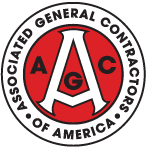Risks are acknowledged and examined in an arbitrary, brainstorming manner in the majority of construction projects. This is frequently lethal to the project’s success, as unforeseen risks come to pass. These risks, instead of being reckoned with and warded off in a premeditated and unhurried manner, have not actually been planned or assessed and is thus required to be taken into hand without delay basis. In the initial stages of planning and preparation in risk assessment and management, it is vital to identify, characterize and assess the prospective risks. Instead of considering each risk arbitrarily and independently, it is exceedingly effectual to spot out risks and then designate them into groups, and then to draft a category list and finally classify possible risks that may lie within each group/category. In this fashion, common influences, causes, factors, possible impacts and probable corrective and/or precautionary actions, could be considered and settled on.
Classifying risks, under construction risk management, is a way to identify the risks methodically and provide groundwork for responsiveness, conception and operation. Each construction venture has its own composition and variations; however there are a few sets of ventures that share a common background to the majority of projects. The chosen project sponsors and team connect with and consider these categories and eventually bring them into play during risk assessment and management progression, for instance, the project team, having the possession of ‘stakeholder resources’ can stand in a position to make out all stakeholders and further state the probable risks that might be generated by them, such as, trade union setback, utility company delays and environmental or community group delays, and bad media exposure; with the possession of ‘operational resources’, the project team can consider and confer on the issues like capability, cost, delivery timing, availability, essential working conditions such as light, weather, ground, etc. While taking construction risk management into account, the prospective actions and associated risks should be acknowledged and examined at all the primary stages with the successive advancement of the project. During the review and closure stages, the real data and the necessary details should further be documented and reassessed, for the future comprehension and application use in the upcoming construction projects.
The most significant issue that surfaces above the rest is the very query that who stands responsible for risk assessment and management. The risk assessment and management responsibility is often handed over to the construction project team, mainly once the project commences. However, there are some groups consisting of some external stakeholders and other individuals who must incessantly examine specific construction activities and provide their respective opinions on the same to the team leader periodically. On identifying any of the risks that may seem probable, it must be directly communicated to the project head for undertaking the necessary actions instantaneously. If needed, emergency actions must be called for so that the situation can be handled effectively, with no extended failure.










